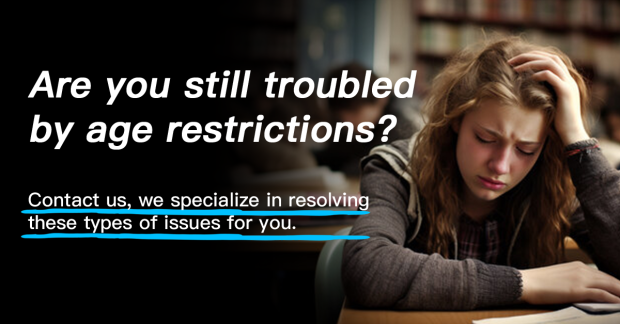For many individuals, a Real ID serves as a primary form of government-issued identification, required for domestic air travel, accessing federal facilities, and other secure transactions. While the Real ID itself focuses on personal details like name, date of birth, and address, there are specific scenarios where vehicle-related information tied to your identification may need updates. This guide breaks down how vehicle information connects to your Real ID, when updates are necessary, and the exact steps to follow.
What Is a Real ID and How Does It Relate to Vehicle Information?
A Real ID is a driver’s license or identification card compliant with the 2005 REAL ID Act, designed to enhance security standards for government-issued IDs. Unlike standard licenses, Real IDs include additional security features and require proof of identity, residency, and Social Security number during issuance. While the card itself does not list specific vehicle details (e.g., make, model, or license plate), it often links to vehicle-related information through:
- Address: Your Real ID address must match your vehicle registration address in most states, as both are tied to your legal residency.
- License Class: Classifications like “Class D” (standard), “Motorcycle,” or “Commercial Driver’s License (CDL)” indicate the types of vehicles you’re authorized to operate.
- Endorsements: Add-ons like “Motorcycle Endorsement” or “Hazardous Materials (HazMat)” specify additional vehicle operation permissions.
When You Need to Update Vehicle-Related Information on Your Real ID
Updates to vehicle-related details on your Real ID are typically required in these situations:

- Change of Address: If you move, your Real ID address must be updated within a state-mandated timeframe (often 10-30 days). This ensures consistency with your vehicle registration, which also requires an address update to avoid fines or legal issues.
- Adding/Removing Endorsements: Acquiring a motorcycle license, CDL, or HazMat endorsement requires updating your Real ID to reflect the new authorization.
- Changing License Class: Upgrading from a standard license to a CDL (for commercial vehicles) or downgrading due to medical reasons necessitates a Real ID update.
- Correcting Errors: If your Real ID incorrectly lists a license class or endorsement tied to vehicle operation, it must be corrected.
Step-by-Step Process to Update Vehicle Information on Your Real ID
While exact steps vary by state, the general process for updating vehicle-related details on your Real ID follows these stages:
1. Determine the Type of Update Needed
First, identify whether you’re updating your address, adding an endorsement, changing your license class, or correcting an error. This dictates the documents you’ll need.
2. Gather Required Documentation
Most states require:
- Proof of Identity: Original or certified copy of your birth certificate, passport, or permanent resident card.
- Proof of Residency: Two documents showing your new address (e.g., utility bill, lease agreement, bank statement).
- Vehicle/Endorsement-Specific Docs:
- For address updates: Current vehicle registration (to confirm alignment with new address).
- For endorsements: Passed knowledge/skills test results (e.g., motorcycle permit, CDL test completion).
- For license class changes: Medical examiner’s certificate (for CDL) or court/doctor’s note (for downgrades).
- Current Real ID: Your existing license or ID card.
3. Choose How to Update
Options depend on your state’s DMV policies:
- Online: Many states allow address updates via their DMV website. However, endorsement or license class changes usually require an in-person visit.
- In Person: Visit your local DMV office. Appointments are often recommended to reduce wait times.
4. Complete the Update
For Address Updates: Submit your documentation, fill out an address change form, and pay the fee (typically $10-$30). A new Real ID will be mailed to your new address within 10-15 business days.
For Endorsements/License Class Changes: Present your test results or supporting documents, complete a new application, and pay the endorsement or license upgrade fee ($20-$100+). You may need to retake a photo and sign a new license.
For Corrections: Explain the error to a DMV representative, provide proof (e.g., a corrected vehicle registration), and request a replacement ID. Fees vary but are often waived for official errors.
5. Update Vehicle Registration (If Needed)
After updating your Real ID address, remember to update your vehicle registration through your state’s DMV portal or in person. This ensures both your ID and vehicle records stay synchronized.
Common Scenarios for Updating Vehicle Information
Let’s explore real-world examples to clarify when and how updates apply:
Scenario 1: Moving to a New State
If you relocate, you must obtain a new Real ID from your new state within 30-60 days. This requires surrendering your old license, providing proof of residency (e.g., lease, utility bill), and passing a vision test. Your vehicle must also be re-registered in the new state, with the address on both your ID and registration matching.
Scenario 2: Earning a Motorcycle Endorsement
After passing the motorcycle knowledge and skills tests, visit your DMV with your test results, current Real ID, and proof of insurance. Fill out an endorsement form, pay the fee ($25-$50), and receive a new Real ID with the “Motorcycle” endorsement noted.
Scenario 3: Upgrading to a CDL
To drive commercial vehicles, you’ll need a CDL. This involves passing a written test, skills test, and providing a medical examiner’s certificate. After obtaining your CDL permit, visit the DMV to update your Real ID to reflect the CDL class (e.g., Class A, B, or C). A new ID will be issued with the updated license class.
5 Common Questions About Updating Vehicle Information on Your Real ID
Q1: Do I need to update my Real ID if I buy a new car?
A: No. Your Real ID does not list individual vehicle details like make or model. However, you must update your vehicle registration with the new car’s information through your state’s DMV.
Q2: What if my vehicle registration address is different from my Real ID address?
A: Most states require your Real ID and vehicle registration addresses to match. If they don’t, you may face fines or issues during traffic stops. Update both within the state-mandated timeframe (usually 10-30 days of moving).
Q3: Can I update my Real ID address online if I also need to change my vehicle registration address?
A: Many states allow online address updates for both your Real ID and vehicle registration through their DMV portal. Check your state’s DMV website for specific instructions.
Q4: How long does it take to receive a new Real ID after updating vehicle-related info?
A: New cards are typically mailed within 10-15 business days. In-person pickups may be available in some states for an additional fee.
Q5: What happens if I don’t update my Real ID with new vehicle-related information?
A: Failing to update your address could result in fines, mail being sent to the wrong location, or issues during airport security checks. For endorsements or license classes, operating a vehicle without the correct authorization may lead to citations or license suspension.


